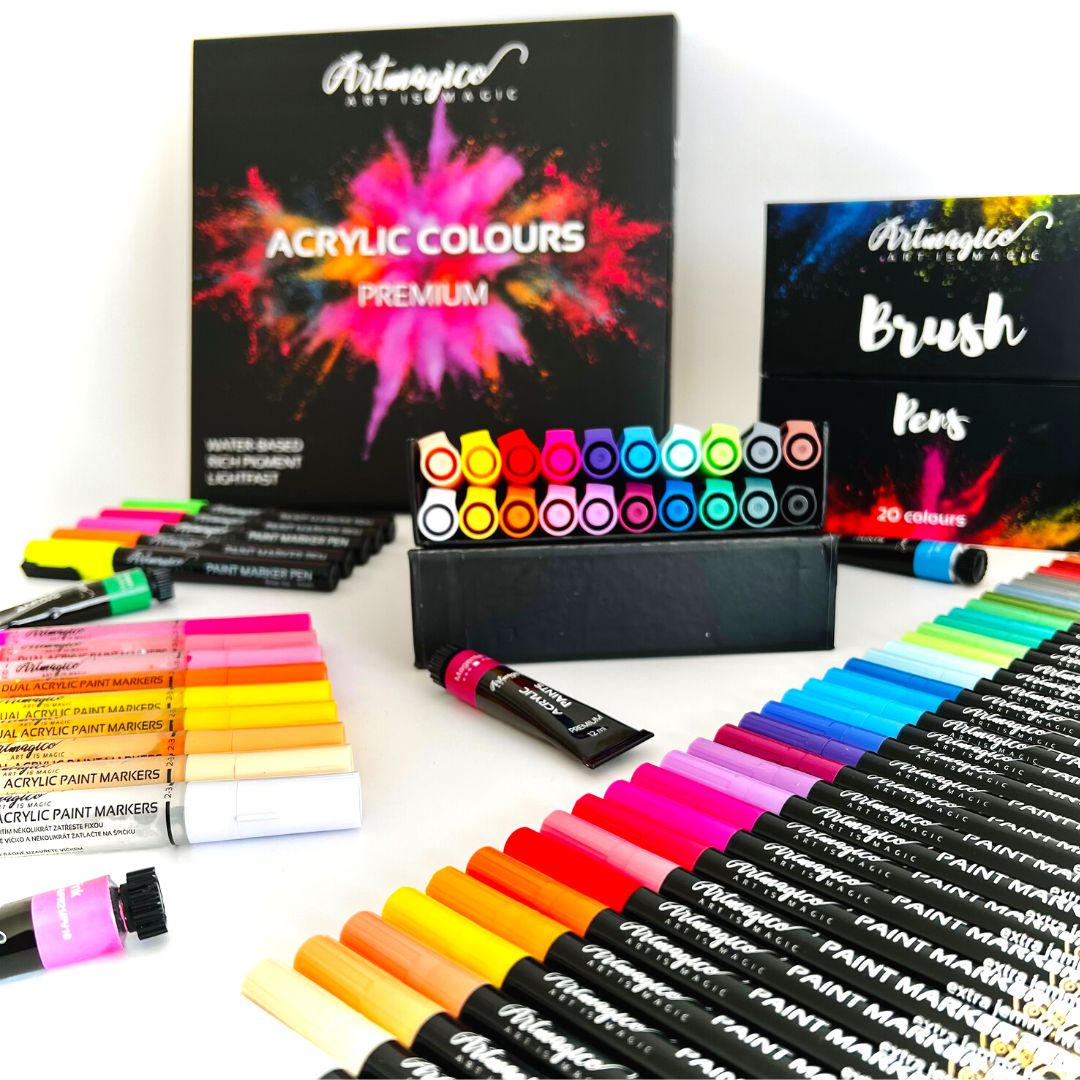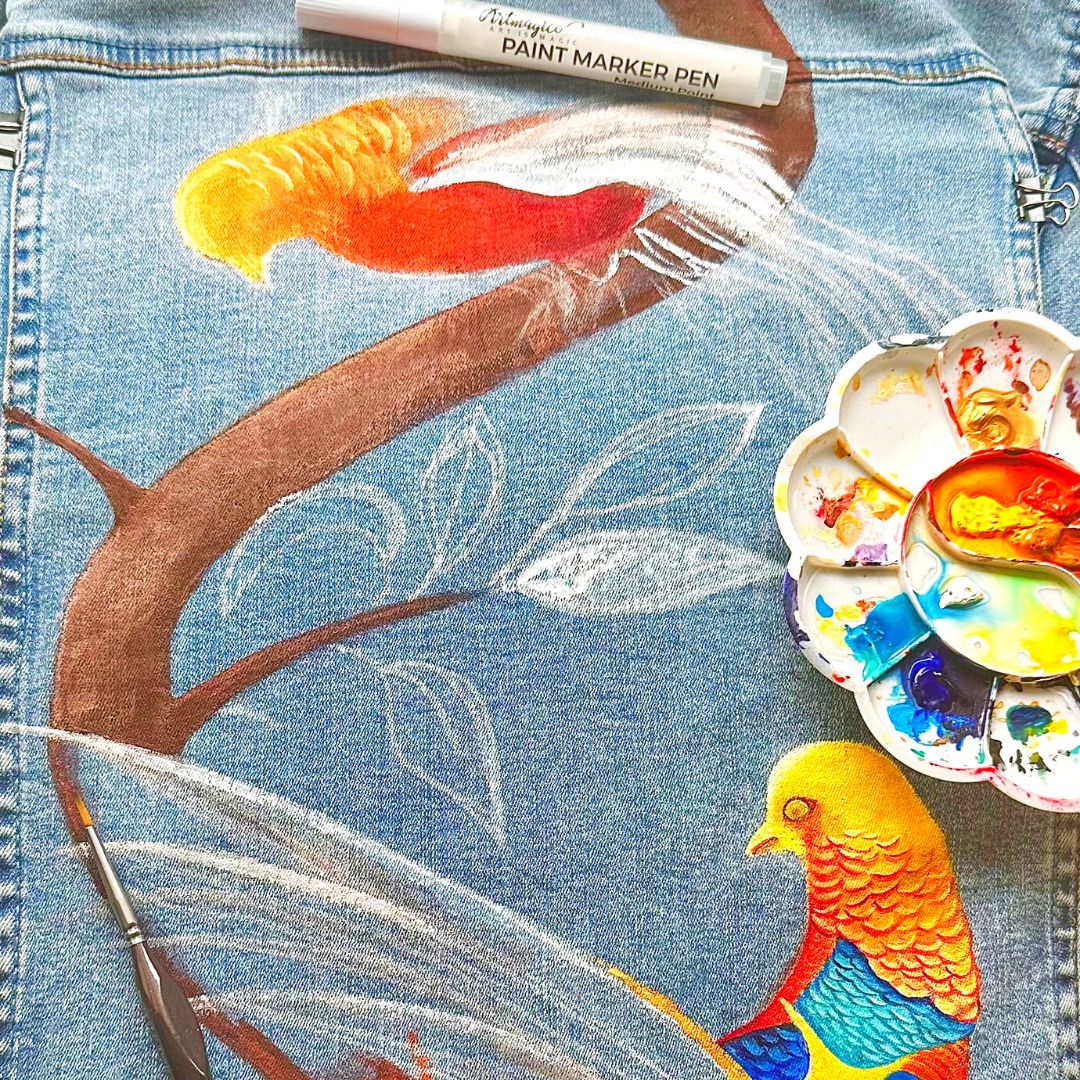How to paint on fabric
Here we show you how you can paint with acrylic paints and markers on textile products. Step by step, we will teach you how to brighten up clothes or accessories made of textiles.

Painting on textiles with acrylic paints and markers is a fantastic way to turn ordinary items like T-shirts, jackets, sneakers or backpacks into original and distinctive works of art. Acrylic paints offer vibrant colours and the ability to layer, and are lightfast and waterproof once fixed.
Step 1: Textile preparation
- Choose a fabric item to decorate, such as a t-shirt, jacket, sneakers, bag or even a fabric backpack, just any fabric item you want to transform.
- Make sure the textile is clean and free of dirt. You can pre-wash it according to the instructions on the garment care label. Washing and ironing before painting can help improve paint adhesion.
- If possible, place a piece of cardboard or backing inside the textile to prevent paint from seeping through to the other side of the fabric.

Step 2: Choosing acrylic paints and tools
- For painting on textiles, we recommend choosing good quality acrylic paints and acrylic markers that have good opacity and that are colorfast and wash-resistant. This is essential to ensure the durability and resistance of painting on textiles. Artmagico acrylic paints and acrylic markers meet all these conditions, so you don't have to worry and can boldly start painting. You can combine and mix them to create unique shades.
- For different effects, prepare brushes of different sizes, sponges or even your fingers to apply the colours.

Step 3: Theme design and colour testing
- Before painting, create a sketch of the motif you want to create on the textile. You can draw it beforehand with a regular pencil or chalk in pencil so that you have a clear idea and can erase or correct the design if necessary.
- Try out combinations of colours and techniques on a small piece of fabric to get a better idea of how the colours react to the textile. Bear in mind when working with textiles that each material behaves differently, has different absorbency and texture, in any case it is a porous material that can suck more or less depending on its nature, so keep this in mind before you start painting and try it on a small piece of fabric where it won't show.
- You may find that the markers or thinner paint will bleed. Therefore, either underpaint the image with undiluted white acrylic paint, and then work with the acrylic paints and markers as you are used to, or conversely use this ability for a blending effect. And until the paints are dry, use a damp brush to mix the colours together.

Step 4: Painting with acrylic paints and acrylic markers
- Mix the paints before you start painting to achieve the desired shades.
- Place the painted area with a mat or cardboard inside the fabric product to prevent the paint from bleeding through to the other side.
- Paint the textile gradually, layer by layer. Allow each layer to dry before starting the next, or conversely, as stated earlier, mix the colours until they dry with a damp brush.
- You can start with simple shapes and gradually add details.
- Use different brushes or sponges to achieve different textures and effects.
- Acrylic paints are usually quick-drying, which makes them easier to work with, but on heavier fabrics, they can take time to dry as the fabric soaks up the paint.
- Apply acrylic markers as you are used to painting and to emphasize details and add depth to your painting.
- Make sure the acrylic paints are completely dry before you apply the markers to avoid smearing the paint and clogging the tip.

Step 5: Fixing and care of painted textiles
- To ensure long term protection and colour retention, once the painting is complete and the paint is completely dry, it is usually recommended to iron the textile on the reverse side or iron it over baking paper or other canvas to avoid transferring the paint to the iron. However, if, according to the nature of the product, for example canvas sneakers, the painting cannot be fixed by ironing, allow the painting to dry thoroughly and impregnate the surface with an impregnating spray.
- When washing, choose the gentle cycle or hand wash on lower settings. It is recommended to wash the textile inside out to protect the image.

And now you can wear your creation with pride. You will have a unique piece of clothing or accessory that expresses you style, creativity and originality. It can also be a distinctive and original gift.
Painting with acrylic paints and markers on textiles is a fun and creative way to transform ordinary pieces into distinctive works of art. Get creative, experiment with colours and techniques and create your own extraordinary fashion pieces. With acrylic paints and markers, textiles become your canvas on which you can express your artistic vision.
Video tutorials on how to paint on different textiles can be found on our YouTube channel:
You can show us your beautiful textile creations on Instagram, with the hashtag #artmagico_official.
Your Artmagico
